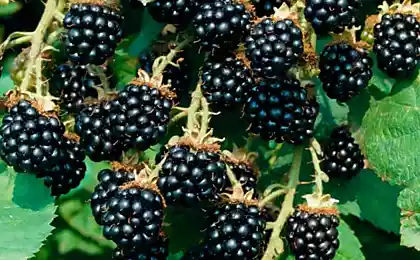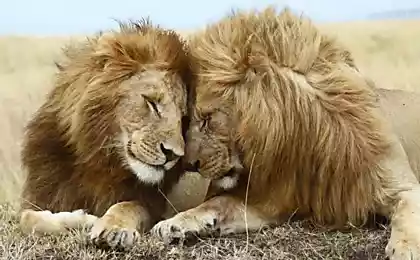7027
Industrious animals (20 photos)
In nature, there are many animals that can give odds to anyone.
They are not forced to work and they do all this with no hands.
With them, you can take an example.
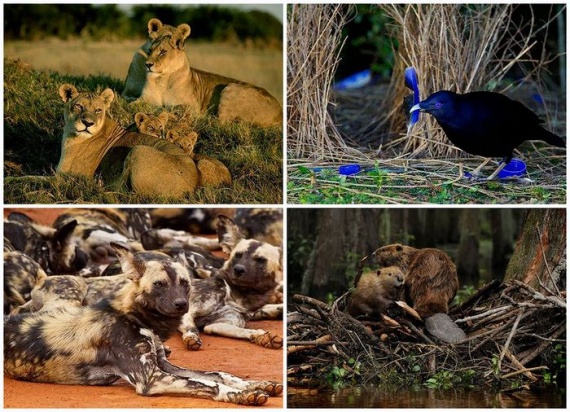
1. One of the most famous and ambitious workers fauna, of course, the ants. Because of their ability to work well-organized groups, so they have successfully mastered the Earth that they account for almost a quarter of all terrestrial animal biomass. They are working very smoothly and in an anthill each performs its role.
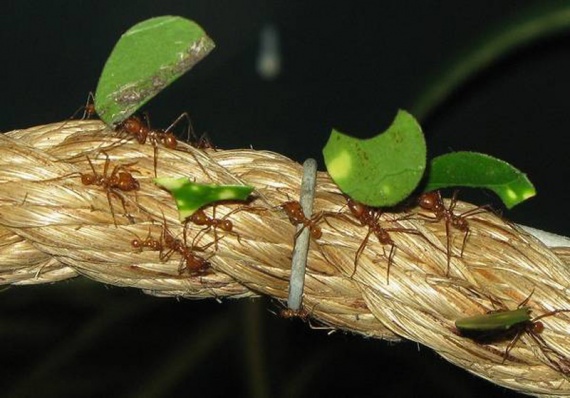
2. Each ant hill is home to one queen (or more queens, depending on the species of ants), and many of the workers, which may differ from each other depending on the tasks they perform. Worker ants have different specializations: soldiers, nurses, construction workers, cleaners and foragers.
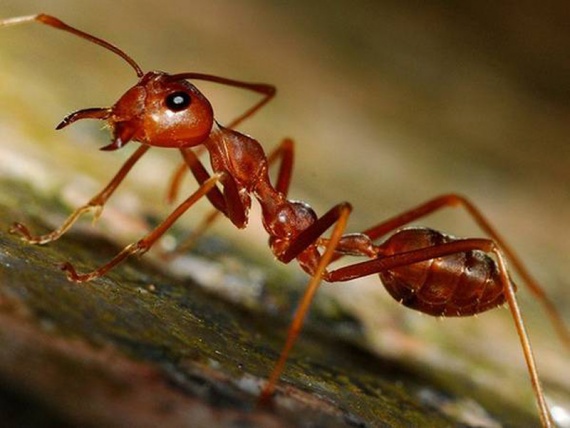
3. Construction talents beaver knows probably everyone. Beaver himself as an ant, too, is a true symbol of industriousness. Beavers by nature endowed with phenomenal building skills. To build their lodges, dams and dams, they not only hauling firewood, but also specifically felled trees, using powerful teeth like a saw.
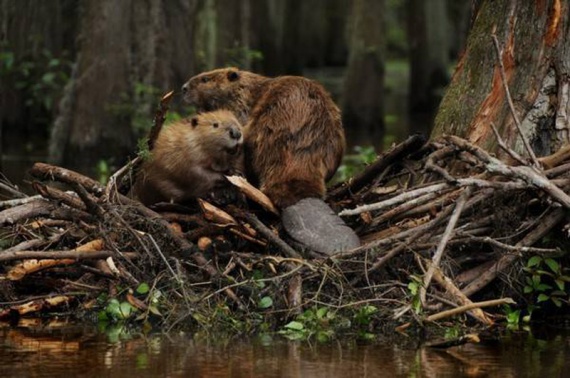
4. Beaver dam and the dam can bring harm to the economy as a person, as well as benefit.
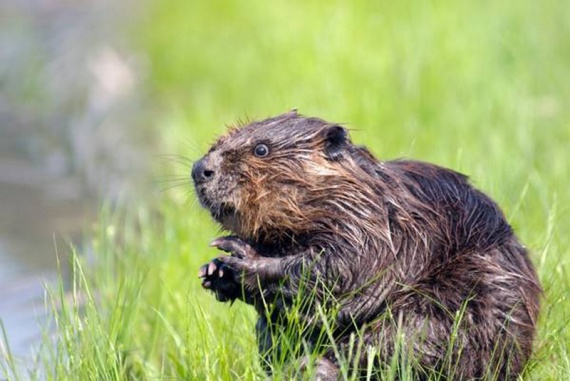
5. Lionesses huntress. In the lion's share pride of lionesses falls a lot of hard work they have to care for babies and provide food for the entire pride. Lions are not as nimble as a lioness, they can not run as fast, and the mane while hunting rather a hindrance. But they are much stronger, so they take over the protection of the territory from encroachment Pride hyenas and other lions.
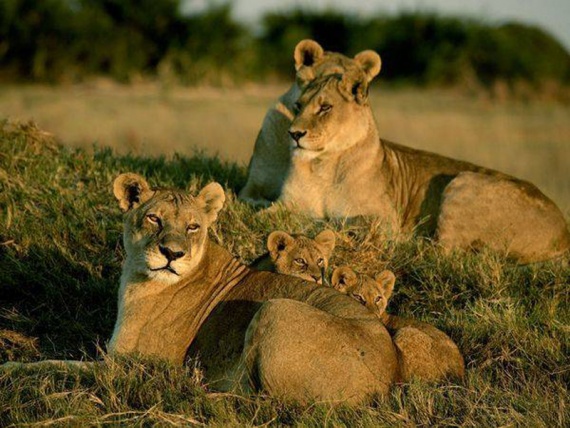
6. small prey lioness-hunter usually eat themselves right where it was caught, and large prey dragged into the territory of pride. The best pieces at the same time take a great deal of males. Lions males, in the case of a successful hunt trying to eat all by yourself. Divide the spoil with the family, they are extremely reluctant to allow more and snatch a piece of pups than adult lionesses.
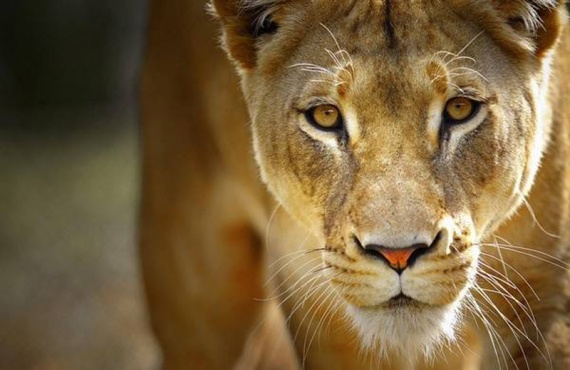
7. African Lycaon pictus. Lycaon pictus unlike lions very well dispense with their relatives, and their flocks almost never fights. All members of the flock together care not only about the young, but even fed pribolevshey or injured people and older relatives.
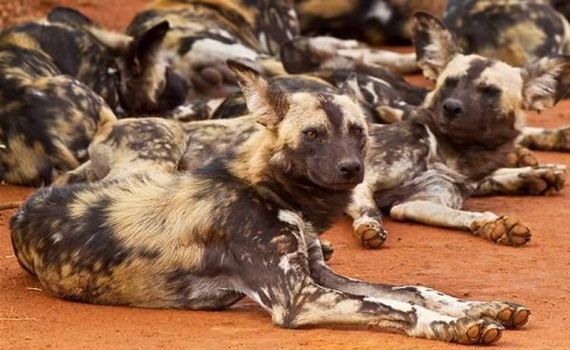
8. They hunted in the morning and evening, and almost always successful. Fights for food in flocks Lycaon pictus does not happen - everyone gets their share, and hunters, and the young, and those who stayed behind to look after them.
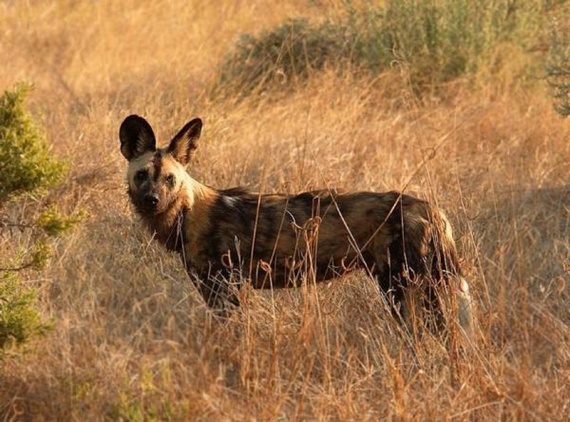
9. Shalashnikov. These amazing birds during the breeding season to attract females to build them with all sorts of real gazebo decorations. For this nest building, decorated with shiny shells of, colored stones, and sometimes all the motley little things that manage to sneak in humans, it is not in use.
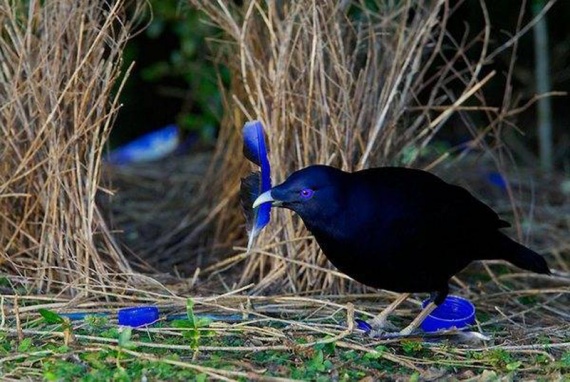
10. Appointment of a tent - only to impress the lady and ask her to come back. After completion of the romantic couple dating lose interest in each other, and the female begins to engage hatching and fledging completely independently.
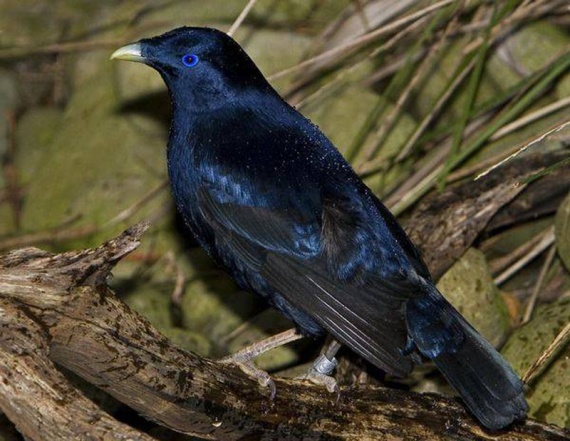
11. Fish wrasse. These small fish (their size is only 5-7 centimeters) specialize in providing medical services and other fish around the coral reef, eliminating suffering from parasites.
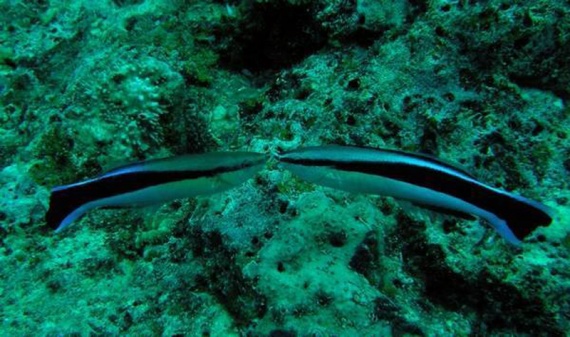
12. The inhabitants of the reef know about the art of wrasse and deliberately swim to him to give himself a good clean. Even these fish are famous for the fact that when the pack is not enough males, some females are able to change their gender and perform the functions of full Cavaliers.
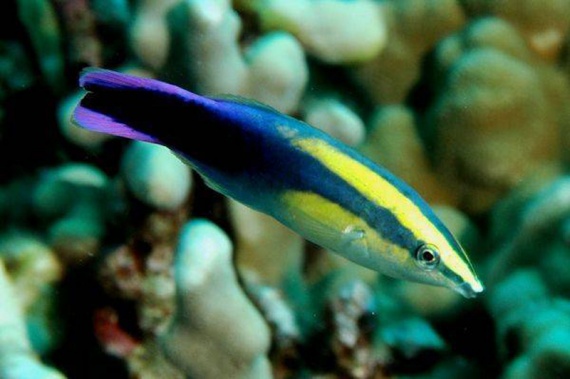
13. Termites: builders and destroyers. Their appearance and habits of termites resemble ants, but in fact they are relatives of cockroaches. Working specialization of these insects is very clear: queen, king, soldiers and workers.
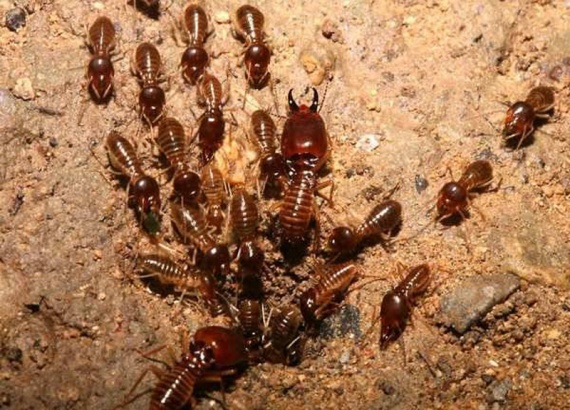
14. Unlike ants, whose future specialization is highly dependent on the power that the ant gets in childhood (worker ants - it's really immature females, if they were fed better, they would all become queens), working specialty termite registered in its genetic code. And no matter how well-fed baby-worker, and he will grow termite workers.
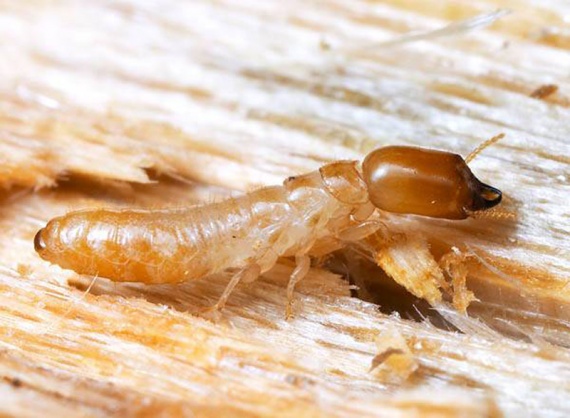
15. Earthworms: loosening the soil
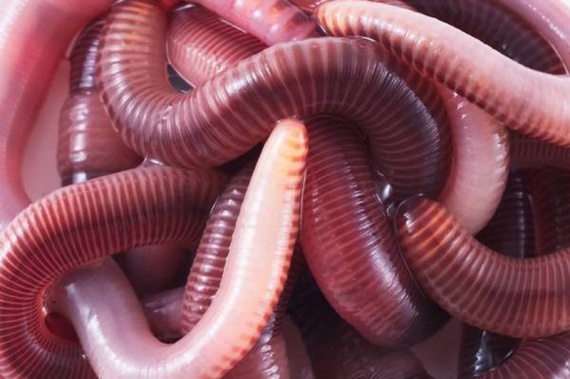
16. Mink earthworms can go into the ground up to 8 meters. These small holes are extremely important to saturate the soil moisture and air.
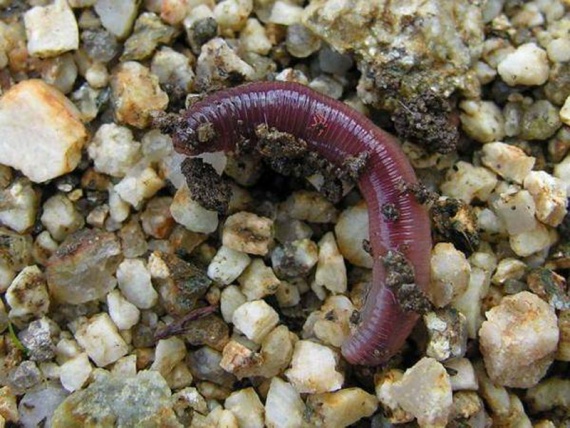
17. Emperor penguins - a living house. Emperor penguins start to hatching (or rather - "left standing") of eggs at the beginning of the Antarctic winter, when the ambient temperature range from -20 to -50 degrees. Of building material in Antarctica at this time of year is available only ice, but penguins solve the problem of creating a warm home where wittier. They gather in a large group and move closer dances, tightly pressed to one another.
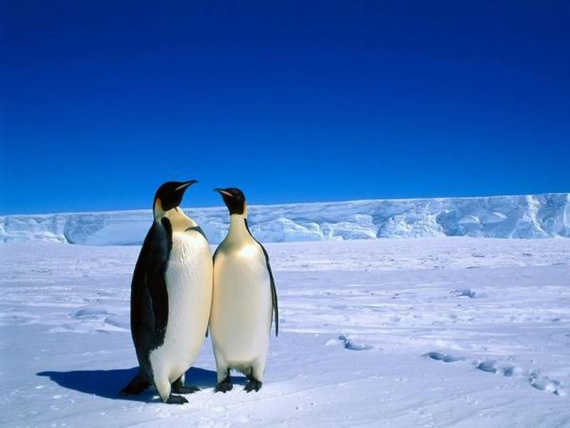
18. The temperature in the inner part of the living house may reach 35 degrees. So that everyone can get their share of heat, penguins are constantly moving from the center to the periphery of the house.
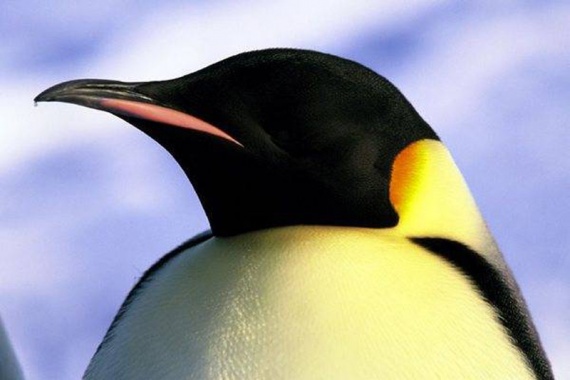
19. Bees: Honey factory. Bees, like their relatives, ants, perfectly adapted to life on our planet, and have mastered all the continents except Antarctica. Obschestvnno-labor organization they also like the ant. Each hive has a queen-queen, a lot of her daughters - the worker bees, drones and more. How many drones decides to make herself queen. Those drones, to which no turn came during the mating season, but because they were still alive, in August fasted (and they eat a lot more than the worker bees) and thrown out of the hive.
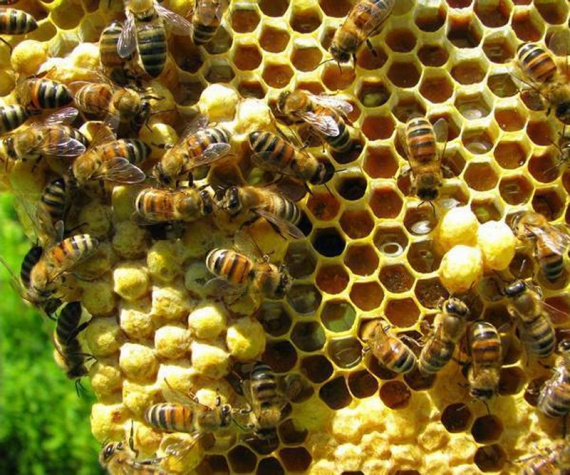
20. Specialization working bee depends on its age. Most young bees come in the retinue of the uterus, and to feed her larvae. At the age of 1 week to reclassify bee wax manufacturer and builder cells. At the age of two weeks bee translated into cleaning the hive. When she turns 20 days, it proceeds to the hive ventilation and protection of notches. Starting from 22 days of age, the bee begins to collect nectar in the fields. If she is lucky enough to live up to 30 days, it will be translated into even more hard work - collecting water for the hive. This is the most dangerous job, which killed most of the bees. Age 35 days - the limit of the life of the working bees. But with the onset of cold weather, the bees cease to age and settle for the winter to spring again set to work, while in the age in which they found the winter.
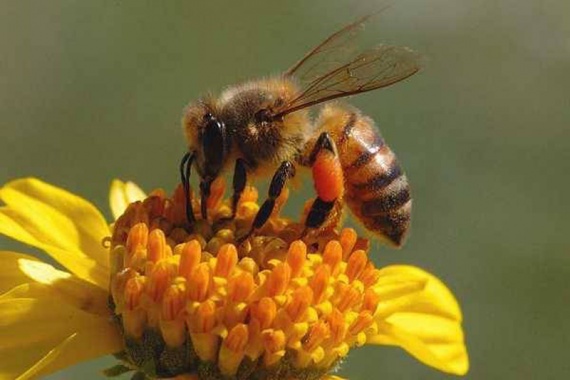
Source: bigpicture.ru
They are not forced to work and they do all this with no hands.
With them, you can take an example.

1. One of the most famous and ambitious workers fauna, of course, the ants. Because of their ability to work well-organized groups, so they have successfully mastered the Earth that they account for almost a quarter of all terrestrial animal biomass. They are working very smoothly and in an anthill each performs its role.

2. Each ant hill is home to one queen (or more queens, depending on the species of ants), and many of the workers, which may differ from each other depending on the tasks they perform. Worker ants have different specializations: soldiers, nurses, construction workers, cleaners and foragers.

3. Construction talents beaver knows probably everyone. Beaver himself as an ant, too, is a true symbol of industriousness. Beavers by nature endowed with phenomenal building skills. To build their lodges, dams and dams, they not only hauling firewood, but also specifically felled trees, using powerful teeth like a saw.

4. Beaver dam and the dam can bring harm to the economy as a person, as well as benefit.

5. Lionesses huntress. In the lion's share pride of lionesses falls a lot of hard work they have to care for babies and provide food for the entire pride. Lions are not as nimble as a lioness, they can not run as fast, and the mane while hunting rather a hindrance. But they are much stronger, so they take over the protection of the territory from encroachment Pride hyenas and other lions.

6. small prey lioness-hunter usually eat themselves right where it was caught, and large prey dragged into the territory of pride. The best pieces at the same time take a great deal of males. Lions males, in the case of a successful hunt trying to eat all by yourself. Divide the spoil with the family, they are extremely reluctant to allow more and snatch a piece of pups than adult lionesses.

7. African Lycaon pictus. Lycaon pictus unlike lions very well dispense with their relatives, and their flocks almost never fights. All members of the flock together care not only about the young, but even fed pribolevshey or injured people and older relatives.

8. They hunted in the morning and evening, and almost always successful. Fights for food in flocks Lycaon pictus does not happen - everyone gets their share, and hunters, and the young, and those who stayed behind to look after them.

9. Shalashnikov. These amazing birds during the breeding season to attract females to build them with all sorts of real gazebo decorations. For this nest building, decorated with shiny shells of, colored stones, and sometimes all the motley little things that manage to sneak in humans, it is not in use.

10. Appointment of a tent - only to impress the lady and ask her to come back. After completion of the romantic couple dating lose interest in each other, and the female begins to engage hatching and fledging completely independently.

11. Fish wrasse. These small fish (their size is only 5-7 centimeters) specialize in providing medical services and other fish around the coral reef, eliminating suffering from parasites.

12. The inhabitants of the reef know about the art of wrasse and deliberately swim to him to give himself a good clean. Even these fish are famous for the fact that when the pack is not enough males, some females are able to change their gender and perform the functions of full Cavaliers.

13. Termites: builders and destroyers. Their appearance and habits of termites resemble ants, but in fact they are relatives of cockroaches. Working specialization of these insects is very clear: queen, king, soldiers and workers.

14. Unlike ants, whose future specialization is highly dependent on the power that the ant gets in childhood (worker ants - it's really immature females, if they were fed better, they would all become queens), working specialty termite registered in its genetic code. And no matter how well-fed baby-worker, and he will grow termite workers.

15. Earthworms: loosening the soil

16. Mink earthworms can go into the ground up to 8 meters. These small holes are extremely important to saturate the soil moisture and air.

17. Emperor penguins - a living house. Emperor penguins start to hatching (or rather - "left standing") of eggs at the beginning of the Antarctic winter, when the ambient temperature range from -20 to -50 degrees. Of building material in Antarctica at this time of year is available only ice, but penguins solve the problem of creating a warm home where wittier. They gather in a large group and move closer dances, tightly pressed to one another.

18. The temperature in the inner part of the living house may reach 35 degrees. So that everyone can get their share of heat, penguins are constantly moving from the center to the periphery of the house.

19. Bees: Honey factory. Bees, like their relatives, ants, perfectly adapted to life on our planet, and have mastered all the continents except Antarctica. Obschestvnno-labor organization they also like the ant. Each hive has a queen-queen, a lot of her daughters - the worker bees, drones and more. How many drones decides to make herself queen. Those drones, to which no turn came during the mating season, but because they were still alive, in August fasted (and they eat a lot more than the worker bees) and thrown out of the hive.

20. Specialization working bee depends on its age. Most young bees come in the retinue of the uterus, and to feed her larvae. At the age of 1 week to reclassify bee wax manufacturer and builder cells. At the age of two weeks bee translated into cleaning the hive. When she turns 20 days, it proceeds to the hive ventilation and protection of notches. Starting from 22 days of age, the bee begins to collect nectar in the fields. If she is lucky enough to live up to 30 days, it will be translated into even more hard work - collecting water for the hive. This is the most dangerous job, which killed most of the bees. Age 35 days - the limit of the life of the working bees. But with the onset of cold weather, the bees cease to age and settle for the winter to spring again set to work, while in the age in which they found the winter.

Source: bigpicture.ru








